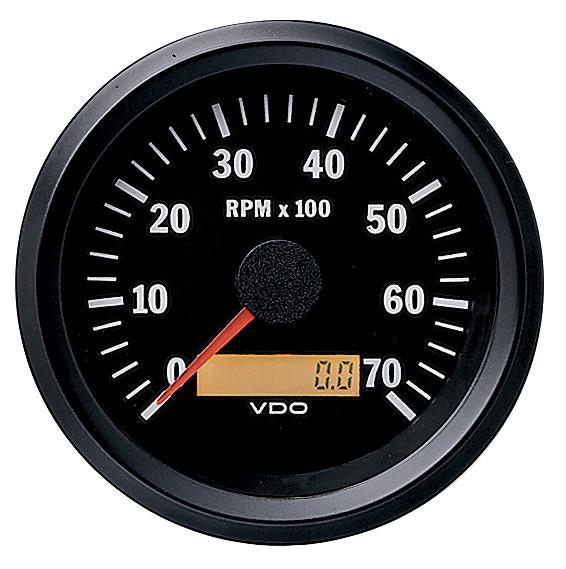Comprehensive Guide to Comprehending and Utilizing a Tachometer Successfully
Comprehensive Guide to Comprehending and Utilizing a Tachometer Successfully
Blog Article
Exploring the Features and Benefits of a Tachometer: A Comprehensive Overview for Auto Lovers
In the realm of automobile instrumentation, the tachometer stands as an essential tool that uses chauffeurs beneficial understandings into their automobile's performance. tachometer. From providing real-time information on engine rate to aiding in optimizing equipment shifts, the tachometer acts as even more than just a dial on the control panel. Its multifaceted features not only improve driving experience however also play a critical role in maintaining engine wellness and efficiency. As we explore the intricate operations and advantages of a tachometer, a deeper understanding of its relevance for auto enthusiasts and specialists alike will certainly unravel.
Comprehending the Essentials of a Tachometer
In the realm of automobile instrumentation, recognizing the basics of a tachometer is essential for any vehicle enthusiast looking to look into the intricacies of engine performance monitoring. A tachometer, often displayed on the dashboard of a lorry, gauges the engine's transformations per minute (RPM) This critical tool gives real-time data on just how quickly the engine crankshaft is rotating. By checking the RPM, chauffeurs can guarantee they are operating within the optimum range to maximize efficiency and effectiveness.
Tachometers normally have actually a range noted in revolutions per minute, with a redline suggesting the optimum rate at which the engine can securely operate (tachometer). This details is vital for preventing engine damages and maximizing gear shifting for manual transmissions. Additionally, tachometers can assist in identifying engine issues such as misfires or a falling short ignition system by discovering uneven RPM analyses
Relevance of Monitoring Engine Rate

The engine speed, gauged in revolutions per minute (RPM), suggests exactly how quick the engine's crankshaft is revolving. Keeping track of engine speed is especially critical throughout gear changes, as it helps chauffeurs figure out the ideal time to change gears for smooth acceleration and efficient fuel usage.
Additionally, tracking engine rate can likewise provide useful insights right into the overall wellness of the vehicle. On the whole, monitoring engine speed with a tachometer is a basic method that can boost driving efficiency, prolong engine life, and make sure a more secure and more enjoyable driving experience.
Enhancing Efficiency Through Gear Shifts
Optimizing performance with strategic equipment shifts is a key facet of making the most of a car's effectiveness and power outcome. Correct equipment moving makes sure that the engine runs within its ideal power band, enabling smooth acceleration and enhanced fuel economic climate. When moving gears, it is critical to pay interest to the engine rate indicated on the tachometer. By monitoring the engine revolutions per min (RPM), drivers can establish one of the most appropriate minutes to his response upshift or downshift for optimum efficiency.

To accomplish peak efficiency via equipment shifts, chauffeurs must practice smooth and timely shifts between equipments, matching engine rate with roadway rate to harness the complete potential of their automobile's powertrain.
Optimizing Performance With a Tachometer
Understanding the art of equipment shifting in high-performance cars not only enhances driving experience however also plays an essential function in taking full advantage of efficiency with a tachometer. tachometer. By paying attention to the tachometer readings, motorists can maximize their equipment shifts to run within the engine's most efficient array. When speeding up, moving gears at the appropriate RPM shown by the tachometer can prevent the engine from straining or underperforming, causing improved fuel performance and overall performance
Furthermore, a tachometer assists chauffeurs avoid unnecessary revving, which not only throws away gas however additionally puts unnecessary stress on the engine. Consistently checking the tachometer while driving allows for smoother gear changes, reducing wear and tear on the transmission system gradually.

Advanced Tips for Tachometer Use
Enhancing driving accuracy via adept tachometer analysis is key to maximizing car efficiency. To look into innovative suggestions for tachometer application, think about incorporating the usage of shift lights. Shift lights are visual indications that illuminate when it's time to move equipments based on engine changes per minute (RPM), permitting for smooth gear adjustments without continuously keeping an eye on the tachometer. Additionally, practicing heel-and-toe downshifting method can be helpful when intending for smoother changes in between equipments. This technique entails making his response use of both the brake and accelerator pedals concurrently while downshifting, aiding to keep engine RPM and stop jerky movements. Making use of an efficiency tachometer with personalized settings can offer real-time data customized to particular driving preferences or car adjustments. By fine-tuning change factors and establishing warning limits, chauffeurs can maximize velocity and engine performance while decreasing the threat of over-revving. These innovative techniques, when combined with a deep understanding of tachometer readings, can boost driving effectiveness and overall driving experience.
Conclusion
In final thought, the tachometer works as a critical device for automobile fanatics to monitor engine rate, boost performance through equipment changes, and take full advantage of effectiveness. By comprehending the features and benefits of a tachometer, drivers can optimize their driving experience and prolong the life-span of their vehicle. Making use of innovative pointers for tachometer application can better enhance driving abilities and total efficiency when driving.
Report this page